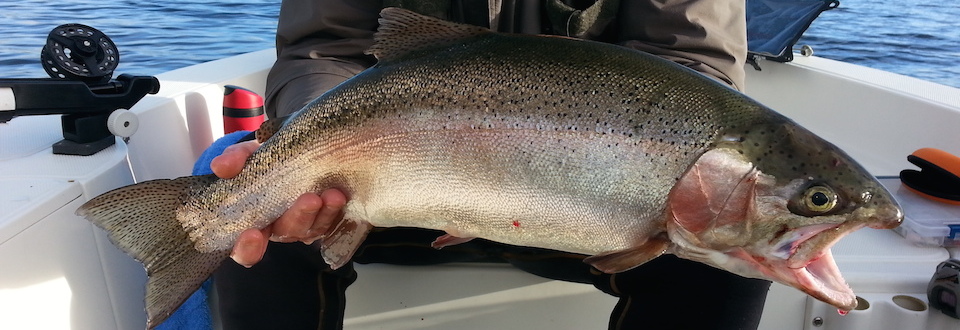LAKE ROTOITI & LAKE OKATAINA
End of Season Early Morning Action
Toward the end of the June Lake Okataina and Lake Rotoiti harling can produce very large high quality Rainbow trout, so before these lakes close to boat fishing some hot fishing can be expected. These are hatchery fish selectively bred for fast growth and then released back into the wild. In autumn when the temperature drops they congregate near release points and become easier for anglers to target.
This year I was lucky enough to fit in one two day trip to Lake Okataina with Mark and John and two day trips on Lake Rotoiti harling with Steve. On Lake Okataina – a lake i have fished often and believe I know well – we found the fishing fairly hard, with only a couple of fish landed, the best of which is the coloured up Jack you can see in the images below.
More importantly John’s highly customised ‘tinny’ performed like a champ, and I believe even further modifications have now been made! I have always been fascinated by how small boats can be customised and adapted to get the absolute most out of limited space and this is a fine example, this boat is a machine that all fish will now fear!
Both days on Lake Rotoiti harling dawned fairly calm with the wind getting up during the day, though never enough that we couldn’t find somewhere relatively calm to jig as the shallow water fishing slowed during the day. The fishing was impressive, with about a dozen fish hooked or landed ranging from 5lb to the 9.3lb hen taken by Captain Steve on dusk. The best fishing was in very shallow water at change of light. Harling is a very relaxing way to fish and a great way to introduce newbies to handling a fly rod and playing a fish without having to learn to cast at the same time.
This trip report couldn’t go by without some mention of Steve’s boat, a Haines Signature 485sf with a Minn Koda electric motor – perfect for trout jigging and inshore salt water fly fishing around the harbours of the upper North Island. The potential for an electric motor with GPS to fix you over a position and keep you there is a potential game changer for jigging. Its a quality meticulously planned setup which really deserved some better boat images, so that I guess will require another adventure when the season opens in October.
























